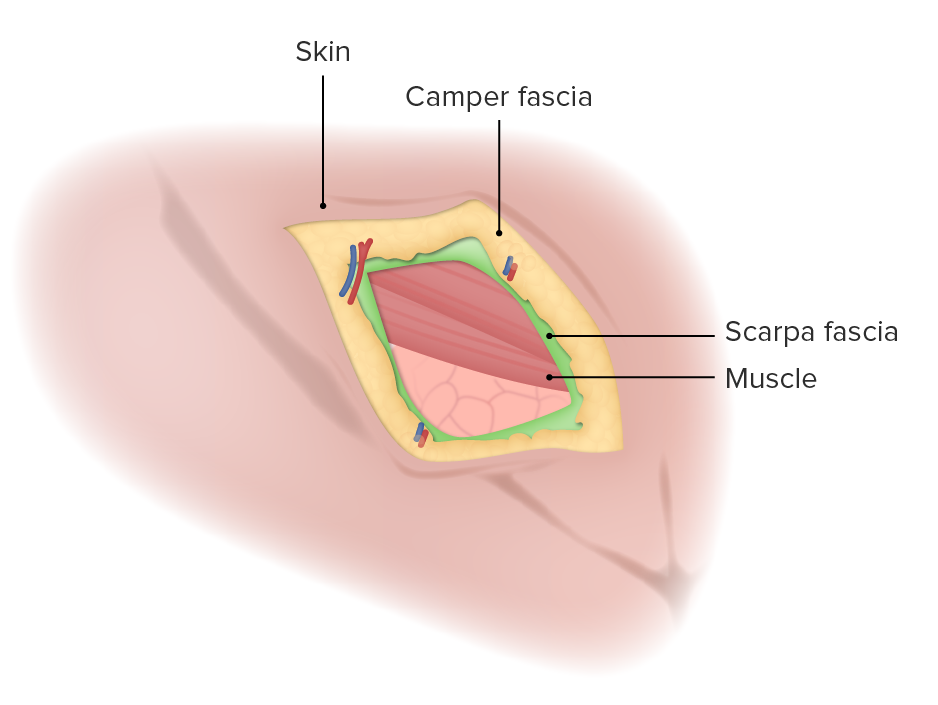Playlist
Show Playlist
Hide Playlist
Boundaries and Important Landmarks of the Abdomen
-
Slides Boundaries and Important Landmarks of the Abdomen.pdf
-
Reference List Anatomy.pdf
-
Download Lecture Overview
00:01 Welcome to this video on the surface anatomy of the abdomen. 00:06 So the abdomen is a really important part of human anatomy Inside with lots of core, gastrointestinal, and reproductive organs. 00:14 Which we'll come to in future videos. 00:17 But first of all, let's have a look at the surface anatomy of the abdomen. 00:20 And specifically, the anterolateral abdominal wall, which you can see here on the screen. 00:27 The anterolateral abdominal wall has a couple of really important only features which we can see here. 00:33 Starting most superiorly and at the inferior aspect of the sternum, We have the Xiphoid process, that's in the midline. 00:41 And then moving laterally, both to the left, and to the right, we have the costal cartilages of ribs 7 to 10. 00:48 And these two landmarks are known as the superior boundary of the anterolateral abdominal wall. 00:55 Inferiorly, we have a number of other bony landmarks. 00:58 Starting with the iliac crest, most laterally, here in green. 01:02 Then the anterior superior iliac spine, The inguinal ligament, which is a connective tissue, it's a ligament that passes from the anterior superior iliac spine towards the midline. 01:14 And then, we have the pubic symphysis, which is most inferiorly and in the midline. 01:19 We'll come to the attachment of the inguinal ligament later on. 01:23 These four landmarks are really forming the inferior boundary of the anterolateral abdominal wall. 01:29 Most laterally and extending down continuously from the axilla or your armpit area, we have this midaxillary line. 01:37 And this really forms the most posterior landmark of the anterolateral abdominal wall. 01:42 So all of the anterior surface, then extending laterally to this midaxillary line, the posterolateral boundary. 01:50 We have some other important landmarks on this anterolateral abdominal wall. 01:55 We're all familiar with the umbilical region. 01:57 And here we have the umbilicus. 01:59 And then, running above and below the umbilicus, we have the linea alba. 02:02 We'll come back to that later on when we talk about the rectus sheath. 02:06 We also and these are clearly demarcated in those people who have very low body fat level. 02:11 We have the six pack or the rectus abdominis muscle, which we can see here, either side of the midline, But actually the features we can see are the tendinous intersections of rectus abdominis. 02:22 And this is how those muscle bellies attached to one another. 02:26 So we can see these tenderness intersections here. 02:29 And then laterally to this muscle bed, we have the semilunar line. 02:33 And we can see those on both sides. 02:36 Other bony features, we have the anterior superior iliac spine. 02:40 We have the iliac crest, which is going over the superior aspects of the pelvic bone. 02:46 And then we have the inguinal groove, which is a little groove that runs all the way down to the external genitalia. 02:52 And deep to that is where they have the inguinal ligament and the inguinal region. 02:57 Again, we'll come to that later on. 02:59 Then in the midline, as I mentioned, the superior to the external genitalia, we have the pubic symphysis.
About the Lecture
The lecture Boundaries and Important Landmarks of the Abdomen by James Pickering, PhD is from the course Surface Anatomy of the Abdomen.
Included Quiz Questions
What is the inferior midline surface landmark of the abdomen?
- Pubic symphysis
- Iliac spine
- Xiphoid process
- Inguinal ligaments
- Rectus abdominis
Which line separates the abdomen into right and left halves?
- Linea alba
- Linea aspera
- Linea semilunaris
- Arcuate line
- Iliopectineal line
The costal cartilages of which ribs form the superior boundary of the abdomen?
- 7, 8, 9, and 10
- 7, 8, and 9
- 6, 7, and 8
- 8, 9, and 10
- 9, 10, 11, and 12
Customer reviews
5,0 of 5 stars
| 5 Stars |
|
5 |
| 4 Stars |
|
0 |
| 3 Stars |
|
0 |
| 2 Stars |
|
0 |
| 1 Star |
|
0 |




